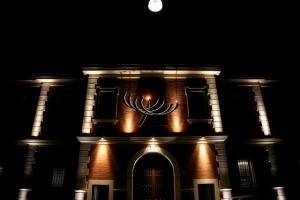CULTURE ‘Ferrara Ebraica’ exhibition at MEIS offers virtual tour
A virtual leap in time gives us the opportunity to visit, get to know, and learn more about some Jewish stories from Ferrara. In the time of Coronavirus, when all exhibition spaces are closed, the National Museum of Italian Judaism and the Shoah (MEIS) has enriched its remote offering, giving the chance of visiting the exhibition ‘Ferrara Ebraica’ (Jewish Ferrara) online. “In this time of uncertainty, MEIS wants to share – at least virtually – some of the values which allowed Jews to keep building their lives, even in difficult times,” they announced. Because culture does not stop, and MEIS, even in this delicate situation, wants to keep being “a place for freedom, exchange of views and sharing of ideas.”
The exhibition, supported by Director Simonetta Della Seta, curated by Sharon Reichel and set up by Giulia Gallerani, is a journey between past and present which tells the story of one of the most ancient Jewish communities in Italy, with its unique cultural and artistic heritage. ‘Ferrara Ebraica’ enhances the extraordinary craftsmanship of ceremonial objects and recreates synagogue settings, as well as wondering about the relationship between Jews and the city of Ferrara, bringing to light fascinating stories intertwined with history.
The tour is enriched by an introductory video, interviews to Ferrarese Jews by Ruggero Gabbai, and photographs by Marco Caselli Nirmal. Traditional Jewish songs from Ferrara, specifically recorded for MEIS, have been curated and performed by Enrico Fink.
The exhibition has been organised thanks to the collaboration with Ferrara municipality and the Jewish community of Ferrara, which lent to MEIS the majority of the exhibited objects, and has received the support of Holding Ferrara Servizi, Emilia-Romagna Region and the Union of the Italian Jewish Communities. The introductory video has been recorded in collaboration with the Contemporary History Institute in Ferrara, with a contribution by Emilia-Romagna Region, namely the law on Remembrance in the XX century.
(Picture by Marco Caselli Nirmal)
Translated by Claudia Azzalini and revised by Mattia Stefani, both students at the Advanced School for Interpreters and Translators of Trieste University and interns at the newspaper office of the Union of the Italian Jewish Communities.

